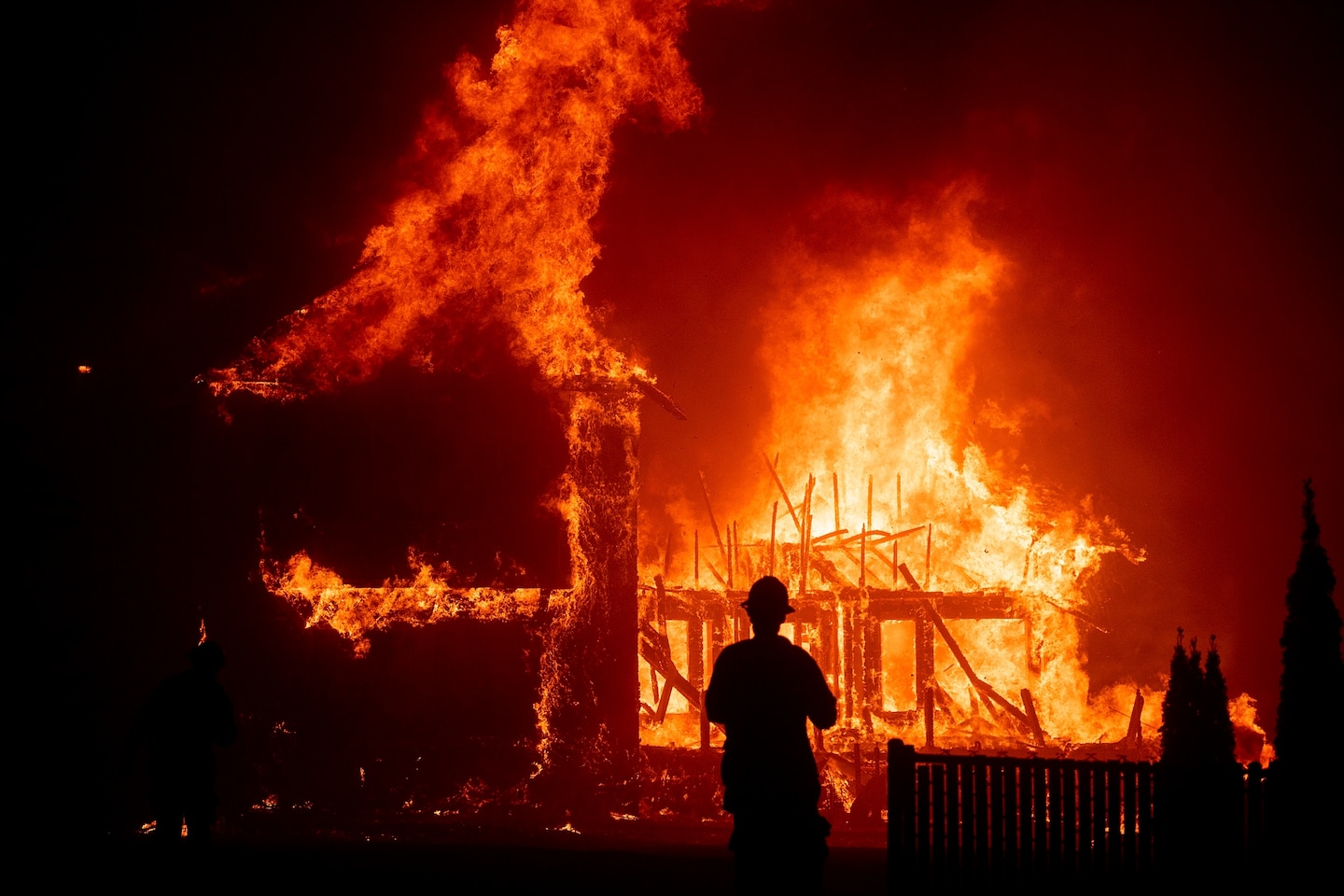Bill Ripple had never been an activist.
The Oregon State University ecologist had spent his career wandering through the hills and canyons of Yellowstone National Park, tracking the health of wolves and other large carnivores. Nor was he particularly outspoken: As a college student, he was so concerned about taking a debate class that he considered dropping out and returning to his family farm.
But then, in 2018, Ripple saw pictures of a town called Paradise, Calif., completely destroyed by wildfire. Houses had disappeared in the blaze; all that remained were twisted hunks of metal and glass. Ripple started writing a new academic paper. He called it: “World Scientists’ Warning of a Climate Emergency.” He sent it to colleagues to see if anyone wanted to sign on. By the time the paper was published in the journal Bioscience in 2019, it had 11,000 signatures from scientists around the world — it now has more than 15,000.
“My life completely changed,” Ripple said. He is the subject of a 30-minute Oregon State University documentary; he gets constant media requests and calls to collaborate from scientists around the world. Last week, he published a new paper on the state of the climate system.
It was called “Entering Uncharted Territory.”
“Scientists are more willing to speak out,” Ripple said. “As a group, we’ve been pretty hesitant, historically.” But, he added, “I feel like scientists have a moral obligation to warn humanity.”
After a few years of record-breaking temperatures and extreme weather events, Ripple’s experience is a sign of how climate scientists — who once refrained from entering the public fray — are now using strident language to describe the warming planet. References to “climate emergency” and “climate crisis,” once used primarily by activist groups like the U.K.-based Extinction Rebellion or the U.S.-based Sunrise Movement, are spiking in the academic literature. Meanwhile, scientists’ communication to the media and the public has gotten more exasperated — and more desperate.
Tim Lenton, one of the co-authors on Ripple’s most recent paper and a professor of earth system science at the University of Exeter, said that 2023 has been filled with temperatures so far beyond the norm that “they’re very hard to rationalize.” “This isn’t fitting a simple statistical model,” he said.
Lenton said he isn’t afraid to use terms like “emergency” or “climate and ecological crisis.” “If you say ‘urgent’ to a politician … that isn’t really enough,” he said.
The language has spilled into academic publications as well. As recently as 2015, only 32 papers in the Web of Science research database included the term “climate emergency.” In 2022, 862 papers contained the phrase.
It wasn’t always this way. In the 2000s and even early 2010s, most scientists shied away making any statements that could be seen as “political” in nature. Jacquelyn Gill, a professor of climate science and paleoecology at the University of Maine, said that when she was doing her PhD in the late 2000s, senior academics warned her against deviating at all from the science when interacting with the media or the public.
“We were actively told if we start to talk about solutions, if we start to talk about the policy implications of our work, we will have abandoned our supposed ‘scientific neutrality,’” Gill said. “And then people will not trust us anymore on the science.”
Susan Joy Hassol, a science communication expert who has worked with climate researchers for years, says that even a decade ago, climate scientists were uncertain what their role was in communicating the dangers of rising temperatures. “I think at least some of them felt that scientists communicate through IPCC reports,” Hassol said, referring to the United Nations Intergovernmental Panel on Climate Change. “‘We do our science, we publish, we put together these reports, and it’s kind of up to other people to listen.’”
Now, she said that has changed. “We have reached this stage of crisis,” she said.
It isn’t just the fact that emissions still aren’t going down — or that policy hasn’t responded quickly enough to the challenge. (Carbon dioxide emissions related to energy use have continued to climb, even following the brief downturn of the covid-19 pandemic.) As the impacts of climate change escalate, scientists say that their language has changed to meet the moment.
When it comes to terms like “climate emergency,” Gill says, “it’s a little bit of strategy and a lot of honesty.” While climate scientists are still discussing whether warming is accelerating, she added, “it’s clear the impacts are becoming more noticeable and in-your-face.”
Hassol said that the shift is simple. In the 2000s, she said, climate change wasn’t yet at the level of an emergency. She recalls a 2009 report called the Copenhagen Diagnosis, which analyzed climate science to date and made suggestions for how to reach net-zero carbon emissions. If world governments had acted swiftly, the world would have only had to cut emissions by a bit over 3 percent per year. “We called that the bunny slope,” Hassol recalled.
If, on the other hand, governments didn’t start the transition until 2020, cuts would have to be much steeper — up to 9 percent per year. “We called that the double-black diamond,” she said. Despite the brief respite in CO2 emissions during the pandemic, humanity’s trajectory has veered closer to the double-black diamond path.
At the same time, many scientists realize that even the best communication in the world isn’t enough to overcome the inertia of a fossil-fuel based system — and the resistance of various oil and gas companies.
“The problem is not that scientists haven’t been communicating clearly enough,” Hassol said. “We communicated pretty darn clearly. Anyone who wanted to hear the message — it was there.”
Chico Harlan contributed to this report.
